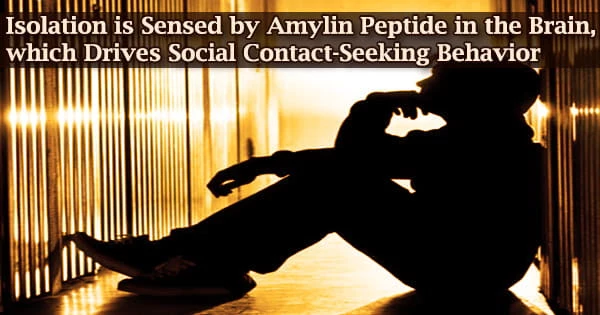Loneliness, or a sense of social isolation, is a key stressor for social animals, and it raises the risk of mental and physical health disorders like depression, substance addiction, obesity, and early death, as we saw during the COVID pandemic.
Kansai Fukumitsu and colleagues at the RIKEN Center for Brain Science (CBS) in Japan discovered a molecular indicator and regulator of social isolation in female mice as part of their research into the neurological basis for loneliness.
The peptide amylin in the medial preoptic area (MPOA) of the forebrain drives social contact-seeking behavior in mice, according to a recent study published in Nature Communications. Being alone reduces the amount of amylin in this brain region.
The MPOA also drives maternal care in mammals, according to previous studies from the RIKEN CBS group led by Kumi Kuroda. For maternal motivation, the amylin-responsive neurons in the central MPOA (cMPOA) are necessary. The initial link between amylin and loneliness was unintentional, as is often the case in scientific discovery.
“While studying amylin signaling in maternal care, we noticed that the amount of amylin in the cMPOA depended on the housing conditions of the mice,” explains Kuroda.
Among other reported molecules, amylin is the one that responds the most to isolation and reunion, and itself facilitates contact-seeking behaviors. With all these results, we became confident that amylin is the major player in the brain that is needed for sensing and seeking social contacts.
Kumi Kuroda
This observation prompted a new investigation of female mice’s behavioral and neurological responses to social isolation and reunion. The researchers discovered that six days of isolation resulted in the almost full loss of amylin, which restored to normal two weeks after the mice were reunited with their cagemates.
This remained true even when the mice were separated from their cage mates by a windowed partition within the same cage, implying that female mice required free physical contact with other mice in order to sustain amylin expression in the cMPOA.
The researchers then carefully ruled out the idea that other factors such as boredom, general stress, physical contact with humans, or defensive engagement with other mice were regulating amylin levels. They also discovered that when amylin-expressing neurons in the cMPOA are isolated, they become deactivated, and when they are reunited, they become activated.
When female mice were separated from their cagemates by a windowed divider, they bit the divider’s bars with vigour. The mice only bit when other mice were across the divider, making it appear as if they were attempting to shatter the window and reconnect with the other mice.
Chemogenetics, a biotechnology that permits artificial control of neural activity, was used to boost this contact-seeking behavior by targeting activating amylin-expressing neurons. Contact-seeking behavior, on the other hand, was reduced once amylin was knocked out of the cMPOA.
“Among other reported molecules, amylin is the one that responds the most to isolation and reunion, and itself facilitates contact-seeking behaviors,” says Kuroda. “With all these results, we became confident that amylin is the major player in the brain that is needed for sensing and seeking social contacts.”
Scientists have speculated since Darwin’s time that social affiliation among adults developed from parental care. This research gives molecular data to back up this claim.
“Both parental care and female-female social contact depend on amylin and augment its expression,” says Kuroda. “This synergy might facilitate cooperative parenting, in which multiple females care for young together, as is observed in mice and humans.”





